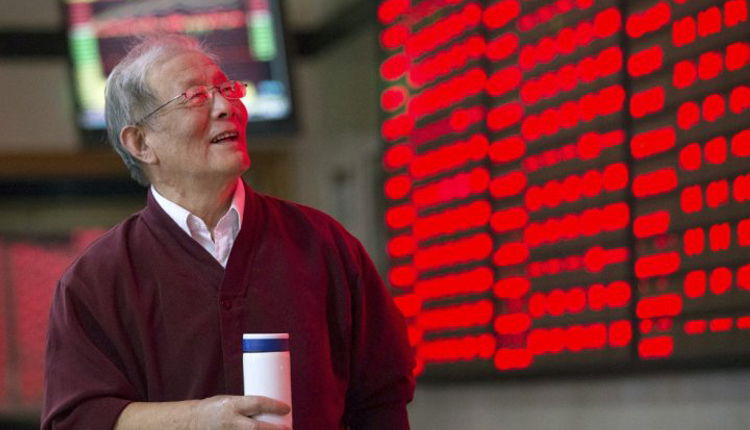Asian markets tracked mostly higher Monday afternoon as investors waited for a new round of high-level U.S.-China trade talks, which is set to begin later in the week.
The mainland Chinese markets, watched closely due to the ongoing trade war between Beijing and Washington, saw gains by the morning session’s end: The Shanghai composite gained more than 0.3 percent while the Shenzhen component rose 0.575 percent. The Shenzhen composite added 0.264 percent.
Hong Kong’s Hang Seng index, meanwhile, gained 0.42 percent as shares of Chinese tech giant Tencent added almost 1 percent.
In Japan, the Nikkei 225 and the Topix slipped 0.37 percent and 0.35 percent, respectively. Shares of Japanese conglomerate Softbank Group declined more than 0.7 percent.
South Korea’s Kospi rose 0.37 percent as shares of industry heavyweight Samsung Electronics rose 1.34 percent. Other tech stocks, however, struggled for gains: Chipmaker SK Hynix fell 1.21 percent, LG Electronics declined 1.58 percent and Samsung SDI was down 0.86 percent.
Australia’s stock market was closed on Monday for a public holiday.
US-China trade talks this week
China is set to send a delegation led by Vice Premier Liu He to Washington for a fresh round of high level trade talks later this week.
Investors will be watching for any important developments on the U.S.-China trade front, with the two sides racing to strike a deal before a deadline in early March. Beijing and Washington have been locked in an ongoing trade war, which saw both sides slap tariffs on each other’s goods.
“Hopes are fairly buoyant with Chinese Vice Premier Liu He set to arrive in the US to lead Beijing’s negotiations this time. An open and constructive dialogue is expected, given low-hanging fruits on trade deficit reduction. But a ‘comprehensive deal’ will elude,” Vishnu Varathan, head of economics and strategy at Mizuho Bank, said in a morning note.
For his part, Varathan said he expected “time may be bought” on hiking tariff rates on the $200 billion worth of Chinese imports from 10 percent to 25 percent. But, he added, rolling back tariffs is “too high a bar.”
Ahead of the expected trade negotiations, U.S. Treasury Secretary Steven Mnuchin said he thought the two countries were “making a lot of progress” in trade talks and that he looked forward to discussions with China’s Liu, Reuters reported last Friday.
Mnuchin’s comments came hours after Commerce Secretary Wilbur Ross told CNBC that the U.S. was still “miles and miles ” from reaching a trade deal with China.
“There’s still an unwillingness on China to make the concessions on investment and a level playing field the U.S. firms want,” Simon Baptist, chief economist at The Economist Intelligence Unit, told CNBC’s “Street Signs” on Monday.
In particular, Baptist cited the ongoing pressure on Chinese telecommunications firm Huawei as possible justification by Beijing to refuse changing its position on foreign firms.
The New York Times reported that U.S. President Donald Trump’s administration has been pressuring America’s allies to bar Huawei and other Chinese tech firms from building the infrastructure needed for the implementation of the next generation 5G wireless standard.
Huawei is under mounting international pressure about the security of its technology, which has become part of the larger narrative in the U.S.-China trade battle.
Fed meeting in focus
Another key event for markets this week would be the Federal Open Market Committee’s (FOMC) two-day meeting starting Tuesday. Fed Chair Jerome Powell and other members of the FOMC are expected to keep interest rates on hold, following a hike in December.
“The FOMC meeting will reflect on the Fed’s position in taking rate decisions off auto-pilot and the likely pace for the rest of 2019. We think the Fed may sound more dovish and be more aligned with the market expectation of limited room for rate increases this year,” Tai Hui, chief market strategist for Asia Pacific at J.P. Morgan Asset Management, said in a note.
“We will also look for hints of any change in the Fed’s strategy to reduce its balance sheet, even though economic momentum is still robust enough for the Fed to hold on for now,” he said.
Currencies
The U.S. dollar index, which tracks the greenback against a basket of its peers, was at 95.679 after seeing highs above 96.6 last week.
The Japanese yen, widely seen as a safe-haven currency, traded at 109.34 against the dollar after seeing lows above 109.8 in the previous trading week. The Australian dollar changed hands at $0.7201 after touching lows below $0.710 last week.
Source: CNBC
